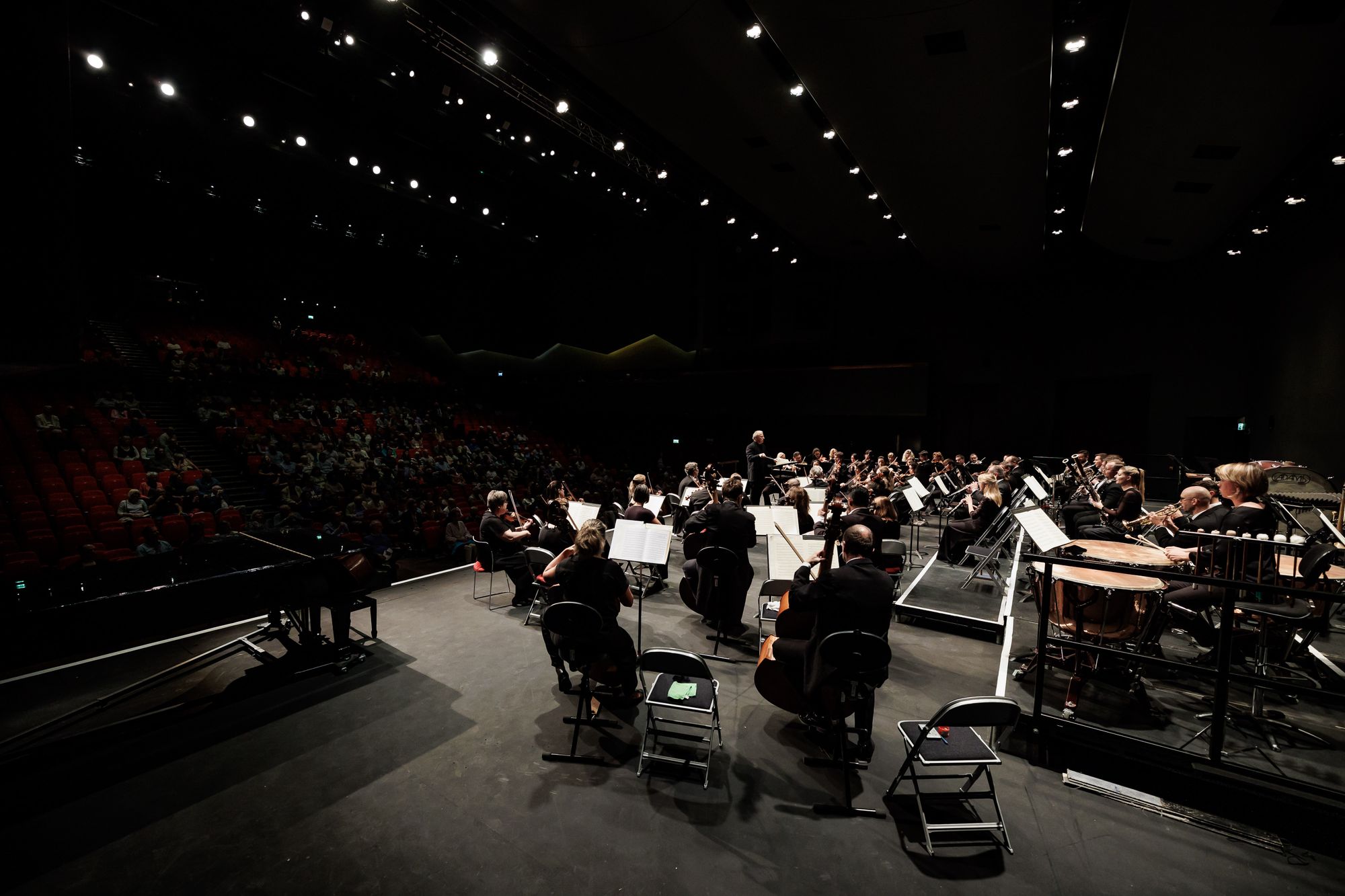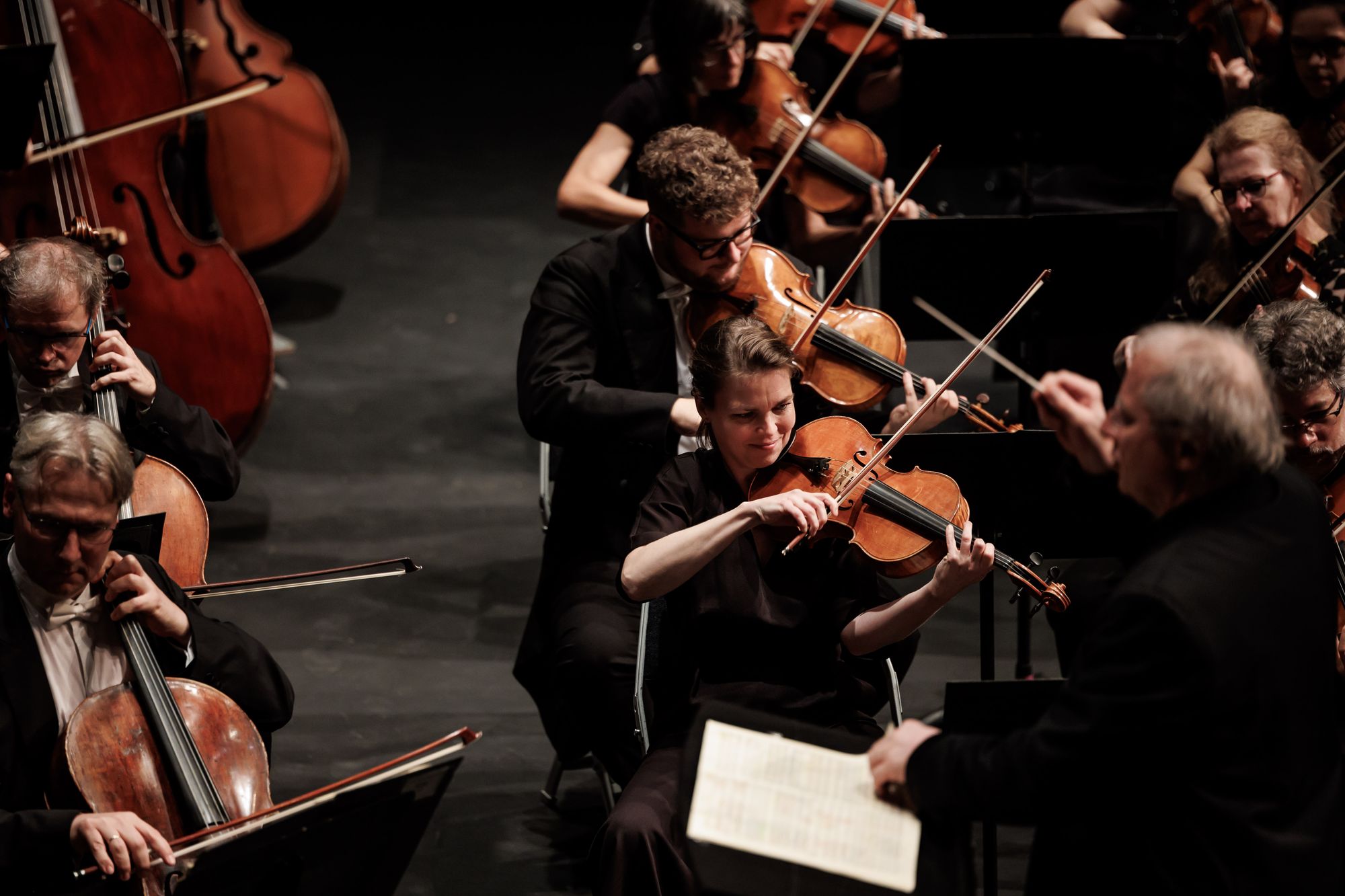Concerto Budapest at G-Live

Mozart, Bartók, Beethoven Pierre-Laurent Aimard (piano); Concerto Budapest Symphony Orchestra / András Keller (conductor). G-Live, Guildford, Surrey, 13.09.2023
Mozart Symphony No. 40 in G minor, K 440 (1788)
Bartök Piano Concerto No. 3 in E, Sz 119 (1945)
Beethoven Symphony No. 3 in E flat, Op. 55, ‘Eroica’ (1804)
This was the second concert in Concerto Budapest’s UK tour (Croydon had come just before, on September 12), and this concert formed part of the Guildford International Concert Season 2023/24. The present run of concerts follows on from their tour in June last year. Seen and Heard International carried this article about the tour recently.
On the previous tour, the soloist had been Angela Hewitt, and the venues Cadogan Hall in London, G-Live, Basingstoke, Birmingham, Manchester and Edinburgh.
For their 2022 tour, they put together this impressive trailer which gives some idea of the energy and commitment involved around their projects:
.. and here is the trailer for the current tour:
The Honorary President of the orchestra is György Kurtág, no less, In 2022, Peter Eötvös became Principal Guest Conductor. Their Music Director since 2007 is András Keller, violinist and founder of the Keller Quartet. Keller is a recipient of the prestigious Kossuth Prize, Hungary’s highest honour for the arts. Keller is also allied to the Guildhall School of Music and Drama, where he is a Professor.
Keller leads the players expertly, and they respond in kind. I suspect some of the midrange detail was slightly muddied because of G-Live's acoustic, Keller had his strings (those that can) standing for the Mozart’s 40th Symphony, a performance of substantial fire. Keller opted to use aonly a couple of double-basses, but they grounded the sound nicely, and the inclusion of the exposition repeat worked perfectly in context. The surprise was the speed of the Andante – if this was walking pace, it was power walking, an easy two to the bar as opposed to six, which lent a somewhat surpising level of excitement to the performance. Brisk, sharp staccatos enlivened the Menuetto (the excellent woodwind section shining in the Trio) before preternatually accurate violins launched the finale. Generally fast speeds and clean-cut phrasing left this Mozart 40 feeling decidedly refreshing.
Concerto Budapest certainly had a high-profile soloist for Bartók's Third Piano Concerto - Pierre-Laurent Aimard, who has just released a complete cycle of Bartók's concertos (on Pentatone, with the San Francisco Symphony and Esa-Pekka Salonen). Aimard has a close link to Hungary, as he explains in the booklet to that disc: ‘Hungary attracted me so much in my younger years: I spent a lot of time with Hungarians and their country. It was not only a privilege but also a choice to work in depth with great Hungarian masters such as György Kurtág, Simon Albert and Peter Eötvös. And nothing could have brought me closer to such linguistically singular music than learning the Hungarian language.’ He also states that, for him, the intensity of the concertos is ‘incandescent’.
This sense of ease with Bartök's vocabulary and mode of expression shines through his recorded interpretations of all three concertos. And it was certainly there live, also, in this vibrant performance of the Third. The sheer clarity of Aimard’s articulation (on a Steinway) was in iteself remarkable, his finger work was faultless. Concerto Budapest were with him all the way: there are a. multitude of difficult exchanges between piano and orchestra (particularly winds) in the first movement, and Aimard and Keller ensured pinpoint accuracy. There was a playfulness in the Aimard/Keller account that is not as pronounced in the recording, too. Here is that Pentatone recording of the first movement:
How beautifully Aimard weighted the chorale early in the central Adagio religioso; how perfectly calibrated, too, the Concerto Budapest strings. There was a real sense of serenity to this performance, with Bartók's gently unfolding string counterpoint the very definition of serenity. Again, here is the Pentatone:
The rhythmically sprung finale bristled with lightness – and here the counterpoint shone with exuberance, Aimard delivering with Bach-like exactitude. Aimard and Keller together seemed to find the folkish roots more than Aimard with Salonen, too. A triumph of a performance from all angles.
Here's the Pentatone finale:
Post-interval, the first movement of the ‘Eroica’ was probably best described as rapid but impossibly disciplined. Including the exposition repeat here makes for a monumental first movement, but does serve to heighten the mystery of the opening of the development itself. Keller’s sure structural view ensured the dissonances of the climax registered fully. The woodwind again excelled, as did the horns – perhaps a special mention for the second player, whose (composed) so-called ‘wrong’ entry was perfectly pitched and who demonstrated remarkable agility in the horn’s lower range in the ‘hunting’ Trio of the Scherzo.

Interesting that the second movement was identifiably a march (it is of course marked ‘Marcia funebre’). Particular praise should go to the oboe of Béla Horváth, first among equals in the wind department. More, this was an incredibly powerful march, its impetus relentless, almost intimidating. With a disciplined Scherzo (discipline seems to be a core trait of this orchestra), it was left to the finale to crown a fine reading of Beethoven’s masterpiece. Keller’s rigorous way with Beethoven’s counterpoint was massively impressive, as was the way he balanced textures within the highest dynamics, particularly in the work’s coda.
Concerto Budapest is a fine orchestra, of that there is no doubt. In 2019, Concerto Budapest cemented a major recording venture with the German record company TACET, and there is already a fine selection of SACDs available: there is phenomenal detail to their performance of Mahler’s Ninth Symphony, there is a superbly sculpted Schubert Nine (listed as No. 8, as they used to in the old days of early LPs!), and a Shostakovich Symphonies 5 and 9 (I admit, to be auditioned); plus a simply stunning Bartók disc of the Hungarian Pictures (Sz 97 / BB 103) and the Concerto for Orchestra. There will be a seperate post on these discs in due course.
Photos © László Mudra
